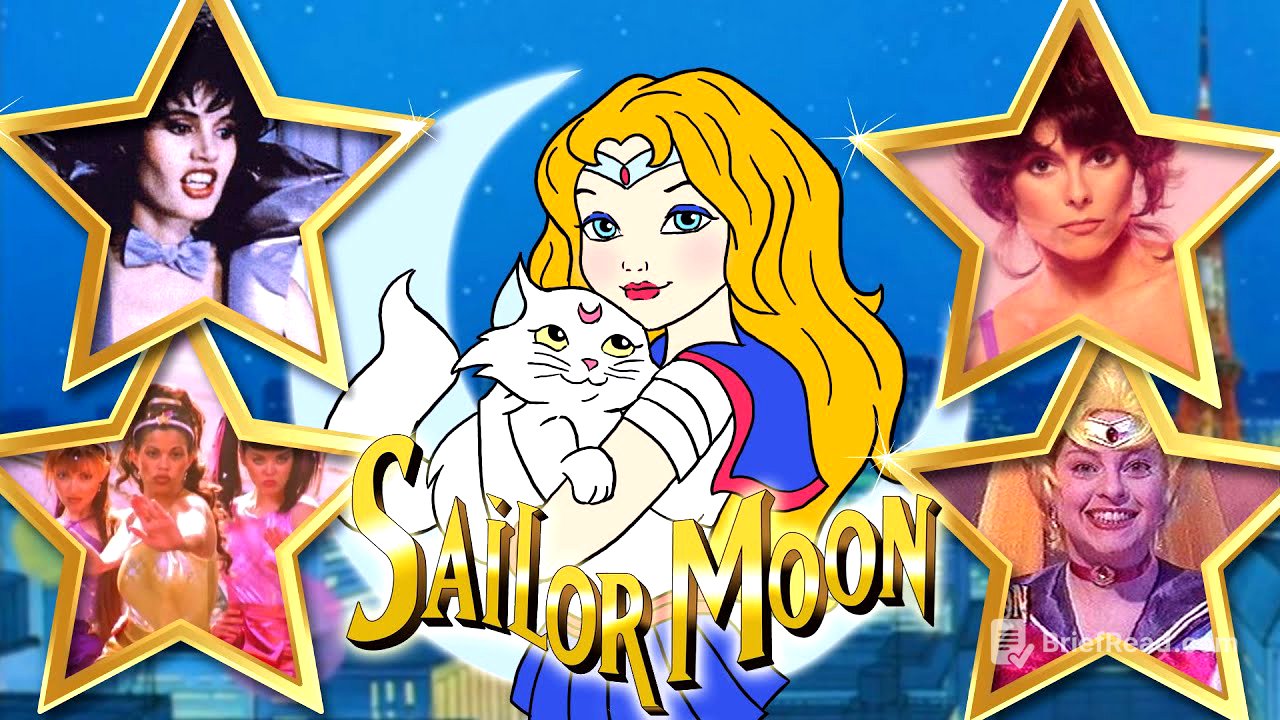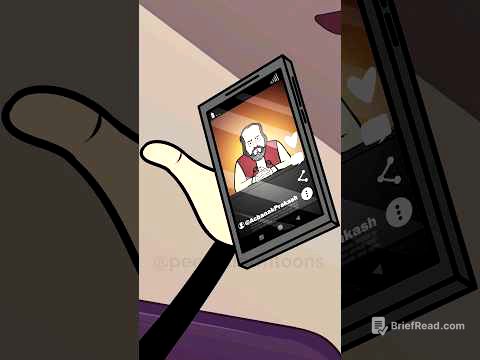TLDR;
This video is a deep dive into the history of Sailor Moon's journey to Western audiences, focusing on the unaired pilot "Saban Moon" and the challenges faced in bringing the anime to North America. It explores the cultural impact of Sailor Moon, the role of fan activism in its success, and the various attempts to Americanize the series. The video also details the search for lost media related to "Saban Moon," including interviews with individuals involved in its production.
- The video explores the history of Sailor Moon and its cultural impact.
- It details the unaired "Saban Moon" pilot and the challenges of bringing Sailor Moon to Western audiences.
- The video highlights the role of fan activism in saving Sailor Moon from cancellation.
- It documents the search for lost media related to "Saban Moon," including interviews with people involved in the production.
Sponsorship [0:00]
The video is sponsored by Likewise TV, a platform that helps users organize and personalize their streaming services into one hub. It allows users to save shows and movies to a single watchlist, making it easier to find and sort through content.
Prologue [1:01]
The video opens with a reflection on the satisfaction of piecing together lost memories. The author shares a personal anecdote about a doll from her childhood that she had been trying to identify for years. After searching for a long time, she finally found the doll was part of the "Little Secrets" line by Mattel from 1993. This personal story connects to the video's main topic: the search for the lost "Saban Moon" pilot.
Intro [8:29]
The video introduces the main topic: the search for "Saban Moon," a failed attempt to Americanize Sailor Moon before the original anime was dubbed for Western audiences. The author discusses the challenges and uncertainties of tracking down this piece of lost media.
Chapter 1: A Moon Star is Born [9:56]
This chapter provides a history of Sailor Moon, originally released in Japan as "Pretty Soldier Sailor Moon" in 1992. The anime, based on the manga by Naoko Takeuchi, follows the adventures of 14-year-old Usagi Tsukino (Serena in the English dub) as she transforms into Sailor Moon and fights evil. The series was a major success, generating 1.5 billion in merchandise sales in its first three years. Sailor Moon tackled mature themes and had a broad representation of gender expression and identity, influencing many young viewers.
Chapter 2: SOS - Age of the Otaku [17:18]
Sailor Moon premiered in Canada and the U.S. in 1995 but faced cancellation due to low ratings caused by unreasonable time slots. Fans launched an online campaign, "Sailor Moon SOS," to revive the series, gathering over 12,500 signatures. The internet allowed fans to connect, share information, and advocate for the show's return. The campaign succeeded, and Sailor Moon was re-aired, but the fifth season, "Sailor Stars," was never dubbed due to mature themes and the introduction of gender-fluid characters.
Chapter 3: Sailor Moon Another Story [26:45]
In 1993, before the original anime was dubbed, there were plans to remake Sailor Moon for American audiences. Rocky Solotov of "Tune Makers" and "Renaissance Atlantic" pitched "Project Y," a half-live-action, half-animated series to Fox. The show would feature a more ethnically diverse cast, with Sailor Jupiter being black, Sailor Venus being Latina or Mediterranean, and Sailor Mercury using a wheelchair. Tune Makers produced a 17-minute proof-of-concept video and a two-minute music video, but the pitch was rejected due to cost concerns.
Chapter 4: I Am...Saban Moon…? [33:46]
In late 2012, artifacts from the failed "Project Y" pitch, including concept art and scripts, surfaced online after the contents of a storage locker rented by a former Tune Makers employee were sold. A two-minute music video from the project had been circulating online since 1998, thanks to Alan Hastings, a LightWave 3D developer. This video sparked interest in the lost pilot and led to the project being dubbed "Saban Moon," even though Saban Entertainment was not involved.
Chapter 5: To Tokyo, From LA [38:02]
While the Tune Makers live-action remake was the first attempt to alter the series, it was not the only one. A proposed live-action film by Disney, with Geena Davis and Melissa Joan Hart, was scrapped. In 1998, Frank Ward and Renaissance Atlantic Entertainment tried to revive the idea with "Team Angel," an unaired fantasy action series, but it was also rejected.
Chapter 6: Disguise Power! A Thorough Investigation [42:46]
The video outlines the search for a clean copy of the two-minute music video, the full 17-minute pilot, and any extra footage from "Project Y." The investigation begins by gathering clues from available information and overlooked sources. The Tune Makers logo and Sailor Moon prototype merchandise, names, and slogans are analyzed. The video also explores the voice talent rumored to be connected to the "Saban Moon" project, including Adrian Barbeau and Tammy Adrian George.
Chapter 7: A Spiral Heart Attack [55:20]
The author reached out to voice actors, toy company employees, and Tune Makers employees, but many leads turned into dead ends. Adrian Barbeau's agent did not respond after initially relaying the message. Dale Hendrickson, who had some association with Tune Makers, responded on Instagram and provided some information but eventually went silent.
Chapter 8: We’ll Be Back After These Messages! [1:03:22]
This chapter is a placeholder for advertisements.
Chapter 9: A Dead Moon Circus [1:05:10]
The author expresses frustration with the lack of communication from sources and questions why everyone involved in the project seemed so tight-lipped. Despite the challenges, the author decides to continue the search and put more of a spotlight on the lost media. To end things off on a high note, the author presents a recreation of what the series would have looked like had it been released to young audiences as part of their Saturday morning lineup.
Chapter 10: Introducing...Saban Moon! [1:10:01]
This chapter summarizes the findings of the five-month investigation, concluding that there was more to the story than was known and that crucial information was being kept under lock and key. The only way to know for sure is if more people decide to come forward and corroborate these theories.
Chapter 11: Carry On [1:11:14]
The author decides to give it one last go-around, retrace her steps, and see if maybe she wasn't being specific enough. She thought back to her interview with Dale with the last pieces of evidence were collected perhaps there was a clue there that went overlooked during their interview Dale had mentioned most of the team had consisted of part-time and freelance animators who worked on Project y part-time and freelance brief descriptors and then it hit her.
Chapter 12: It’s Rabbit Season [1:15:30]
Using the search term "animator at Tune Makers freelance," the author finds the digital record of Lynn Walsh, who worked on the "Saban Moon" pilot as an intern and cleanup artist. Lynn Walsh was a california-based 2d traditional assistant animator with over 22 years of experience. The file said that Lynn Walsh was a california-based 2d traditional assistant animator with over 22 years of experience.
Chapter 13: Heart Moving [1:30:45]
The author contacts Lynn Walsh, who provides new insights on the filming of the series. The live-action portion was shot at a Hollywood Sound Stage, using the same set from "Saved by the Bell College Years." The cat Luna was telepathic, and Chuck Jones was present in the studio for the creation of Tune Maker Sailor Moon. Lynn Walsh worked as the assistant animator, Rocky Solotoff as the executive producer, Dale Hendrickson as the art director, and Raymond Iacoveci as the producer of animation. Adrian Barbeau was cast to voice Queen Barrel and Queen Serenity.
End Credits [1:31:48]
After wrapping up the interview, the author inquired about the man and heard nothing but good things Lynn mentioned that the other person in question was a beloved figure in the animation industry having worked on several shows back in the day he was described as kind patient and extremely talented and that his Insight would be helpful in her investigation as he had what Lynn claimed to be first-hand knowledge of the show they had met through her time at tune makers and eventually came to become her Mentor. A week later, a message had reached the author's inbox and it was a reply from the man in red.








